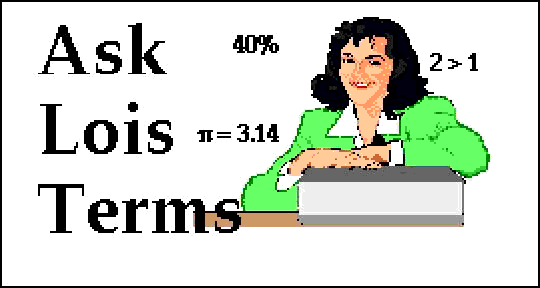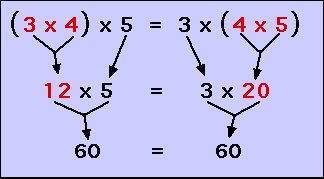

Dear Students: I promised Michelle that I would explain some of the properties of real numbers. So, let's take a look at the associative property.
Here is a good way to remember the associative property.

Meet Lisa, Teresa, and Felicia. Yesterday Lisa and Teresa were great friends--that is, they were "associating" with each other. They were, however, not speaking to Felicia.

Over night, I'm sorry to say, Lisa and Teresa got into a big fight while talking on the phone. Teresa said never mind, she would just be friends with Felicia. So today, Teresa and Felicia are associating with each other, and neither of them is speaking to Lisa. (Not a happy story, but such is life.)
Notice how in the first part of the story the parentheses, or grouping symbols, grouped Lisa and Teresa together, and in the second part, the parentheses grouped Teresa and Felicia together. None of the girls moved, just the parentheses shifted.
Now watch how the associative property works with addition. Notice that the parentheses shift from 3 and 4 to 4 and 5.

You see, it doesn't matter whether we add the 3 and 4 first or the 4 and 5 first. The answer comes out the same.
Check out the following problem, and you will see that the associative property also works for multiplication.

Dear Lois: Why do they call it simple interest when it isn't simple? Your friend, Miguel
Dear Miguel: Wait until you are introduced to compound interest. Then simple interest will seem simple to you!
Simple interest can be calculated with the formula I = PRT. All you have to do is multiply the Principal times the Rate times the Time, and out comes your Interest.
Compare that to the formula for compound interest which is:

Sort of makes you appreciate the simple things of life, doesn't it.
Actually, it isn't called simple interest because of whether it is easy or hard to do. Simple interest is just a flat fee approach to interest. You put your money (the principle) in a savings account at 3% (the rate) for a year (the time.) At the end of the year, the bank gives you a flat 3 cents (the interest) on every dollar.
With compound interest, the bank may calculate your interest four or more times during the year. Each time it is calculated, the interest is added into your account. At the next calculation you get interest on that money, too.
Read more about the properties of math!
Commutative Property
Distributive Property
Return to Home page.
"Ask Lois Terms" © 1997 Lindsay-Livingston